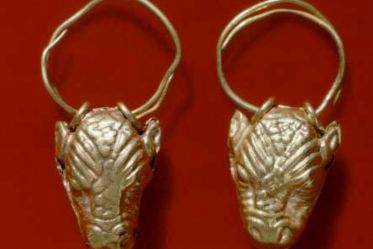![]() +357 24 828 100
+357 24 828 100
![]() +357 24 828 100
+357 24 828 100
The archaeological area of Kition consists of two sites: Kathari and Pampoula. It is located within the limits of the modern city of Larnaka. Various finds came to light between the 18th and the 19th century, during excavation work conducted by foreign travelers and tomb looters. One such find is the famous Assyrian stele of king Sargon II, now in Berlin. A plaster cast of the stele is exhibited in the Larnaka Museum. The first systematic excavations began in 1929 by the Swedish Cyprus Archaeological Expedition, under the direction of Einar Gjestard. In 1959, the Department of Antiquities, under the direction of Vassos Karageorghis, began excavating the site of Kathari. Following the events of 1974, the French Expedition of the University of Lyon, which was digging until then at the site of Salamina, undertook the responsibility of excavating the site of Pampoula.
The earliest phases of human habitation and religious worship in Kition, are found at the site of Kathari. Five consecutive temples and workshops for the smelting of copper, have already been excavated and are dated from the end of the 13th to the end of the 11th century B.C. This corresponds to the Late Bronze Age and the Geometric period, during which the city of Kition flourished and was inhabited by Mycenean Achaeans. Following their destruction, a magnificent temple identified as that of Astarte, was erected in their place by the Phoenicians, sometime around 850 B.C. The temple was used until the beginning of the 3rd century B.C., when it was also destroyed.
The excavations at the site of Pampoula, have shown that the area was continuously inhabited from the end of the Geometric to the Hellenistic period. The first architectural remains dated to the 9th century B.C., consist of a temple and various other buildings. During the Archaic and Classical period, the temple was extended to include many rooms, open courts with stoas and shrines, offering hearths and industrial installations for the smelting of copper. The variety of finds indicates that a number of deities was worshipped at Kition, the most significant being the Phoenician deities Astarte (equivalent of Aphrodite), Melkart (equivalent of Heracles), and Esmoun (equivalent of Asclepius), as well as the Egyptian deities Hathor, Bes and Horus.
During the Classical period, large-scale construction work was commissioned in the city of Kition, such as monumental public buildings which formed part of an ambitious public works project. Part of this project was also the draining of the marshland in the quarter of Pampoula, the creation of a sanitary system, and the construction of two harbours, one for commercial purposes and one for military use. Only the military one has been excavated so far. The ramps used to tow the ships into the harbor for repair or for safe keeping, still exist.
Accessibility:
Entrance: Wheelchair -accessible (circulation within the site also possible).
Parking space (not marked).
No wheelchair accessible WC.


